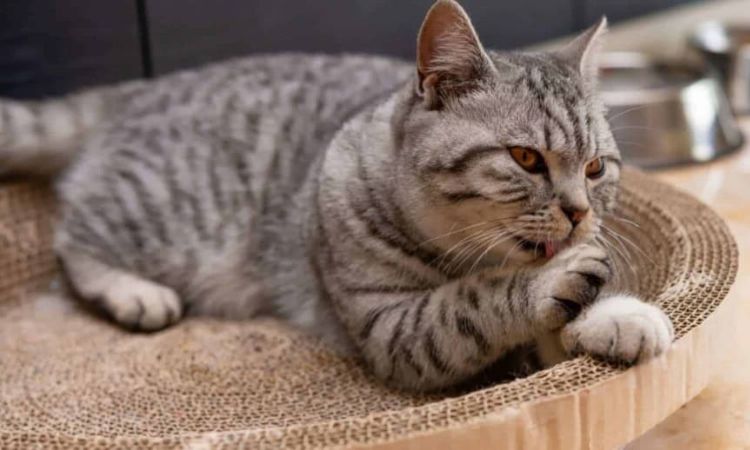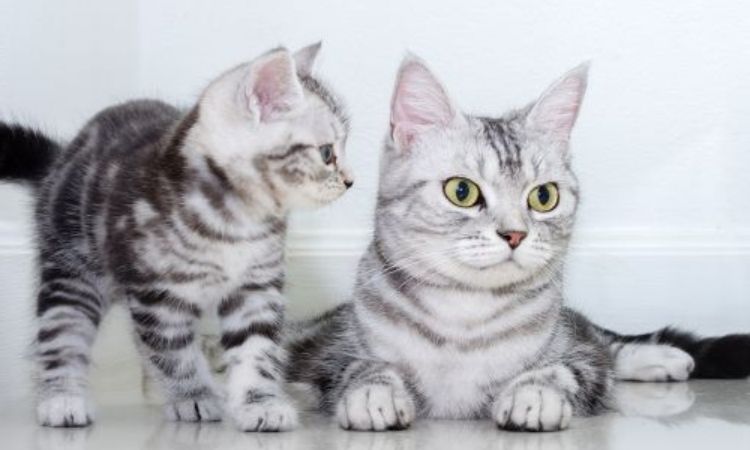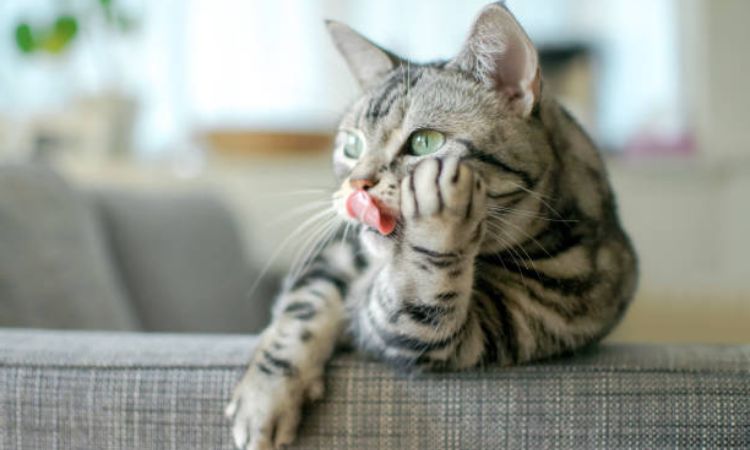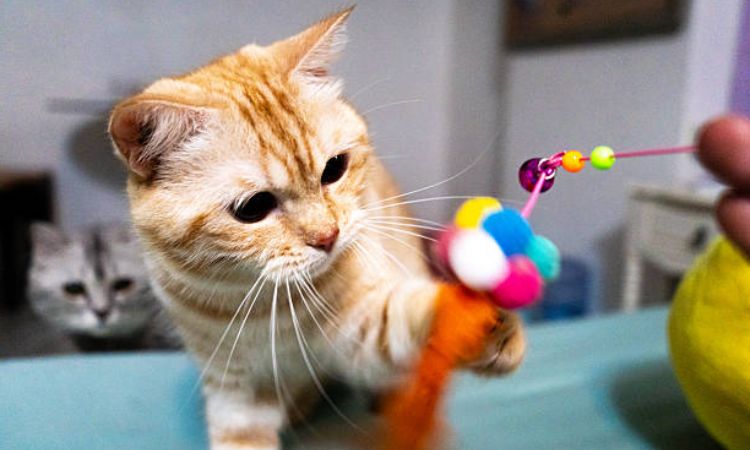The American Shorthair didn’t just arrive in the New World—it earned its place in history one paw at a time. Originally valued as stealthy shipmates and barn guardians, these cats have evolved from hardworking pest controllers into beloved family companions.
Curious about their looks, personality, cost, or how to care for one? Let’s dive into everything you need to know about the American Shorthair’s size, colors, price, and lifestyle needs.

Introduction to the American Shorthair
The American Shorthair has deep roots in early American history and is widely regarded as one of the original working cats of North America. Its ancestors were European felines brought over by settlers to serve a practical purpose: protecting valuable food supplies from mice and rats during long voyages and in newly established colonies. These skilled hunters later became indispensable on farms and homesteads, where their ability to control pests earned them long-term admiration.
Over time, these hardy cats adapted to the climate and lifestyle of the New World, eventually evolving into a distinct breed. While their working cat origins shaped their strength and intelligence, today’s American Shorthairs are celebrated just as much for their temperament as their history. They are affectionate without being demanding, easy-going, and remarkably adaptable to different types of households. Their playful streak and gentle disposition make them wonderful companions for families, children, seniors, and even homes with other pets.
American Shorthair Size and Appearance
1. Size and Build
The American Shorthair is a medium-to-large domestic cat renowned for its strong, muscular frame. Adult males typically weigh between 11 and 15 pounds (5–7 kg), while females are slightly smaller, averaging 6 to 12 pounds (2.75–5.5 kg). Standing 10 to 14 inches tall at the shoulder, these cats have a solid, well-proportioned build that combines agility with endurance. Their broad chest, sturdy legs, and compact, muscular body give them both a commanding presence and a cuddly appeal. With proper nutrition and care, American Shorthairs are long-lived, often enjoying 12 to 17 years of healthy life.
2. Coat and Eye Characteristics
American Shorthairs have a short, dense, and resilient coat that requires minimal maintenance while providing protection from both indoor and outdoor elements. Their fur is soft yet firm, with a natural luster that highlights their rich coloration.
The breed’s eyes are large, wide-set, and expressive, contributing to their characteristic attentive and curious expression. Eye colors vary widely depending on coat color, ranging from gold, green, copper, and hazel to blue, with some individuals displaying heterochromia (two different-colored eyes). This striking combination of coat and eye variety, along with their muscular build, makes American Shorthairs one of the most visually versatile and attractive cat breeds.
American Shorthair Colors and Patterns
The American Shorthair is famous not only for its strong, muscular build and friendly personality but also for the incredible variety in its coat colors and patterns. While these cats are known for their short, easy-to-care-for fur, their coats can come in nearly 100 different variations, ranging from solid shades to intricate patterns.
Solid Colors
- Black – Deep, uniform black fur with matching paw pads and nose, often paired with striking yellow-gold eyes.
- Cream – Soft buff cream color from root to tip, typically with yellow-gold eyes and pink nose and paw pads.
- White – Pure white fur, sometimes featuring heterochromia (two differently colored eyes) with pink noses and paw pads.
- Blue – Grayish-blue coat, usually with yellow-gold eyes, blue nose, and blue-toned paw pads.
- Red – Vibrant red fur with yellow-gold eyes, red nose, and dark pink paw pads.
Patterned Coats
- Chinchilla – Light undercoat with black or blue tipping on the back, head, flanks, and tail; also available in silver, red, cream, blue, and tortoiseshell.
- Bicolor – White base combined with a secondary solid color such as black, blue, cream, or red, with sharply defined borders between colors.
- Tabby – Recognizable striped pattern with the classic “M” on the forehead; includes mackerel, classic, ticked, and patched variations.
- Calico – White undercoat with red and black patches, sometimes including red tabby stripes.
- Van – Mostly white with small color patches on the tail, legs, ears, or face; tortoiseshell is excluded.
- Smoke – Light undercoat with darker tips, creating a smoky effect; common in black, blue, cameo, and tortoiseshell.
- Shaded – Light undercoat with colored tips; common shades include cream, red, blue, and silver.
- Tortoiseshell – Black fur interspersed with red patches; eye, nose, and paw pad colors vary with coat.
- Patched Tabby (Torbie) – Combination of tabby stripes and tortoiseshell patches, often with white chest or paws; colors include blue, brown, or silver with red and cream accents.
No matter which color or pattern you choose, an American Shorthair is a smart, affectionate, and long-lived companion. Their versatile appearance means there’s likely an ASH to suit every aesthetic, while their friendly personality makes them a wonderful pet for families and individuals alike.

Price and Cost of Owning an American Shorthair
1. Initial Acquisition Cost
The cost of bringing an American Shorthair into your home varies depending on the source and quality of the cat.
- From a Reputable Breeder: Expect to pay between $500 and $1,500, with higher prices for show-quality kittens, rare coat colors, or those with champion bloodlines. Breeder reputation, lineage, and adherence to breed standards can significantly influence the price.
- Adoption or Rescue: Adoption fees typically range from $50 to $200, often covering initial vaccinations, spaying or neutering, and sometimes a first veterinary checkup. This is a cost-effective way to welcome an American Shorthair while providing a loving home to a cat in need.
- Factors Affecting Price: Several elements contribute to the overall cost, including the breeder’s reputation, pedigree and bloodline, the cat’s coat color and pattern, and whether the cat is considered “pet-quality” or “show-quality.”
2. Annual and Lifetime Costs
Owning an American Shorthair involves recurring expenses to maintain their health, comfort, and well-being.
- Veterinary Care: Regular checkups, vaccinations, flea prevention, and dental care are essential. Expect annual vet costs ranging from $75 to $500, depending on your cat’s age and health needs.
- Food and Nutrition: American Shorthairs are prone to obesity if overfed or given low-quality food. A balanced diet of high-quality cat food is crucial, costing approximately $30 to $100 per month. Special diets for kittens, seniors, or health issues may increase this expense.
- Supplies: Essential items such as litter boxes, litter, scratching posts, toys, bedding, and feeding dishes are necessary for a comfortable home environment. Initial setup may cost $235–$360, with ongoing monthly maintenance around $30–$70.
- Pet Insurance: Optional but highly recommended, insurance can help cover unexpected medical emergencies. Monthly premiums typically range from $20 to $70, depending on coverage and the cat’s age.
By planning for both upfront and ongoing costs, potential owners can ensure a healthy, happy, and long-lived companion while avoiding unexpected financial stress.
Comprehensive American Shorthair Care

Daily Care and Exercise
Despite being low-maintenance, American Shorthairs benefit from daily physical and mental stimulation:
- Exercise: Encourage climbing, pouncing, and interactive play using cat trees, toys, or laser pointers.
- Hunting Instincts: Food puzzles or treat-dispensing toys replicate natural hunting behaviors.
- Cuddling and Social Interaction: These cats enjoy human companionship but can also spend time alone if provided with enriching toys and safe spaces.
Nutrition and Feeding
A balanced diet is essential to prevent obesity and maintain overall health. Guidelines include:
- Kittens: Feed “growth” or “all life stages” formulas.
- Adults: Use “adult maintenance” diets tailored to their activity level.
- Seniors: Consider diets with joint-support supplements like omega-3 fatty acids.
Feeding Tips:
- Provide two to three smaller meals daily rather than one large meal.
- Use food puzzles or interactive feeders for mental stimulation.
- Consult your veterinarian to determine the appropriate caloric intake based on age, weight, and activity level.
Health and Medical Care
American Shorthairs are generally healthy with a lifespan of 15–20 years, but some conditions require attention:
Common Health Concerns:
- Hypertrophic Cardiomyopathy (HCM): Heart muscle disease; genetic testing and routine cardiac exams help early detection.
- Dental Disease: Regular brushing, dental treats, and veterinary cleanings prevent tartar buildup, inflamed gums, and bad breath.
- Feline Lower Urinary Tract Disease (FLUTD): Watch for blood in urine or difficulty urinating, especially in males.
- Kidney Disease & Polycystic Kidney Disease (PKD): Regular vet checkups and specialized diets may help manage progression.
- Hyperthyroidism & Diabetes: Monitor weight, appetite, and thirst; early diagnosis improves management.
- Allergies: Look for over-grooming, skin irritation, or ear infections.
- Deafness: Particularly in white cats with blue eyes; indoor living is safest for deaf cats.
Pet Insurance: Recommended to cover unexpected emergencies and routine care.
Grooming and Maintenance
American Shorthairs are relatively low-maintenance but benefit from regular grooming:
- Coat Care: Weekly brushing to reduce shedding and prevent mats.
- Skin Protection: Light-colored cats may need sun protection.
- Eye Care: Check for discharge or irritation.
- Ear Care: Monitor for mites or infections and consult a vet if needed.

Behavior and Training
American Shorthairs are intelligent, playful, and social. Proper socialization and training help develop confident, well-adjusted cats:
- Socialization: Gradually introduce to new people, pets, and environments.
- Play and Enrichment: Toys, climbing spaces, and puzzle feeders keep them mentally stimulated.
- Training: Reward-based training works well; these cats enjoy challenges and interactive activities.
- Alone Time: Provide perches or toys to keep them entertained when home alone.
Environment and Safety
Ensure your American Shorthair has a safe, stimulating environment:
- Litter Box: Keep clean and accessible.
- Toys and Scratching Posts: Encourage activity and prevent boredom.
- Perches and Window Seats: Allow observation of outdoor activities safely.
- Indoor Safety: Especially important for cats prone to deafness or less street-savvy behaviors.
Key Takeaways for Pet Parents
- American Shorthairs are adaptable, low-maintenance, and affectionate.
- They thrive on daily play, balanced nutrition, and routine veterinary care.
- Proper grooming, enrichment, and environmental safety support their long-term health.
- Early socialization ensures friendly, confident behavior with people and other pets.
With consistent care, American Shorthairs can be loyal, loving companions for 15–20 years or more, enriching your home with their playful personality and gentle temperament.
American Shorthairs combine striking looks, friendly personalities, and easygoing care needs, making them a perfect companion for many households. With their wide range of colors and patterns, manageable size, and generally healthy disposition, they offer years of affectionate company. Whether adopting or purchasing from a reputable breeder, understanding their care requirements ensures your American Shorthair thrives and remains a beloved member of your family.






